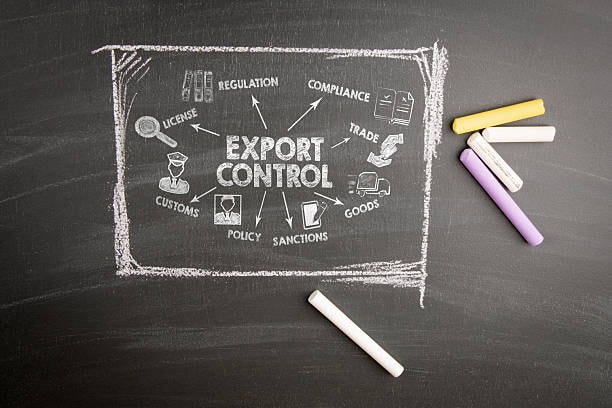
Get to know all about export licenses and the associated regulations : its definition, types, application, and adherence. Comprehensive resource of entry of a business in international trade markets.

Global trade is still rising and more and more companies are turning to international opportunities, yet the most important issue is to master the world of export rules international trafficking. Export licenses would be very important gatekeepers of foreign trade and would be necessary to be assured that exported goods will not be in conflict with national security, foreign policy and economic goals defense trade controls. The knowledge of export licensing is very essential to every business deciding to explore the international markets state’s directorate.
At GWT World wide, a professional logistical company in global freight forwarding as well as global supply chain solutions, we understand the concern of an accurate export control classification number and export documentation need an export license. As they are facing these growing complexities in requirements, we have strategic services that could guide any business in that complex standards, conformity, and efficiency of their global trading operations and business. Our services are all-inclusive of air freight, sea freight, China-Europe railway freight, and international express, and also customs clearance, and furthermore, support to Amazon FBA exports require an export license bis website.
Understanding Export Licenses: The Foundation of International Trade
An export license is a government document, which gives the right to export certain goods, technologies or services to certain destinations. Such types of licenses, along with specific license requirements licensing agencies
, are multi-purpose as it secures national interest of security, polices foreign policy interests, ensures anti-proliferation of matters about sensitive technology, and observation of international agreements and sanctions licensing agency dual use items.
Not all products and destinations need export licenses. There are extensive categories of licenses or license waivers in which many commodities are included and may be exported without seeking any individually speaking authorization. Nevertheless, there are several classes of goods, including certain exports which should be licensed in detail before export, and these include dual-use technologies, military equipment, encryption programs, and goods, which are to be sold to a restricted country items exported.
The licensing mechanism establishes the system through which states can surveillance and regulate the traffic of sensitive material as well as allow legal trade. This balance, including aspects of border protection, is vital in the existential efficiency of nations to be secured and at the same time, economic growth is being sheltered by international trade import license.
Types of Export Licenses: Navigating Different Authorization Categories
Export licensing regiments normally have a number of different races. Specific licenses, or as they are also referred to, individual licenses, are license to make specific transactions of sensitive goods, banned goods, or goods that may be shipped to restricted destinations arms regulations. These licenses are considered individually by the exporter and their applications should be elaborate in nature including supporting documentation.
When granted general licenses, the specified types of exports are titled to blanket permission pretty much on account of pre-designed conditions. These licenses simplify exportation of transactions that are less risky and still exercise the needed checks in accordance with export regulations . Another channel is license exceptions, according to which specific products can be exported without separate licenses to particular countries, in case the exporters correspond to the set standards.
Temporary export licenses simplify the process of exporting items and goods that will still be taken back to its exporting country contained in equipment that will be used in demonstration, repairs or marketing in forms of exhibitions. Transit licenses and the re-export licenses regulate goods moving through a country but not into its commerce and goods previously imported into the country being exported to a third country respectively.
This is important in providing knowledge on the type of license that fits your particular case and therefore would be adhered to and processed effectively. It is usually a matter of what your goods are, where they are finally going to, the end-user, the company identification number and what you wish these goods to be utilized upon.
The Export License Application Process: Step-by-Step Guide

The application process of an export license will start by figuring out whether your products will need a license. This is done by categorizing your goods with export control classification numbers and destination country control. The majority of nations have web-based databases and categorization systems to help exporting companies in this identification.
When the licensing requirements have been ascertained, exporters are required to fill comprehensive application forms. These normally call for product specifications, technical information, destination details, end-user, and even the intended use description. Such supporting documentation is technical specifications, contracts, end-user certificates, trade restrictions, and company registration documents.
Factors that government agencies take cognizance of during an application process include national security implications, aim owing to foreign policy, stability on the region at hand, and proliferation risks. Such a review might take several weeks or several months, depending on the complexity and sensitivity of the asked export and the export administration regulations .
Contacting licensing authorities all through the process is necessary. Agencies can ask further information, clarification or changes to transactions that are being proposed. The review is also fast when the records are up to date and the response to requests is quick.
Key Documents and Requirements for Export License Applications
The effective use of export license needs exhaustive paper work as evidence that outputs are legitimate and that they are suitable. End-user certificates are basic documentations along with a commercial invoice where end users will provide comprehensive details about their identity, purpose of acquiring goods or materials, and undertakings of restrictions to buy or sell goods.
The technical specifications should be clear and correct in terms of describing what is being exported, its performance, abilities as well any dual-use possibilities. Other commercial documentation, e.g. contracts, purchase orders, invoices etc. put the transaction into context, and show that there were legitimate business purposes.
The registration documents of the companies, its ownership structures, its history of keeping in line with the requirements are part of the information that will guide the authorities on the integrity of candidates. The onging credit or any other financial evidence might be demanded to prove the commercial feasibility of the transaction.
In the case of sensitive technologies, extra-technical measurements or independent analyses can be required. Other applications involve visitation of sites or end user verification process to verify the correctness of the information provided and the security arrangements.
Common Goods Requiring Export Licenses
Dual use goods form one such major category that would need to have export permits. These products are used both civil and military, and there are advanced manufacturing equipment, special materials, sophisticated electronic devices, and some software and technologies. The dual-use aspect poses some possible security issues, including biological weapons, that should be looked into critically.
Obviously, military and defense-related equipment needs serious export controls. This category includes such differences as weapons systems, military vehicles, specialized protection items, and technologies. Cebtain civilian derivatives of military products might need to be licensed as well, since they might be adapted or converted into military use.
Export controls are escalating on high-technology products such as advanced semiconductors, quantum computing related, and artificial intelligence tools as well as cybersecurity products. The technologies are believed to be vital to the competitiveness and security of the united states government, causing the increase in scrutiny and control actions.
Some raw materials and other commodities also have to be exported with export licenses notably those having a strategic nature or those that can be dual-used. The examples of such nuclear materials, some forms of chemicals, and sophisticated alloys will include the possibility of being misused in weapons program development or other sensitive purposes.
Understanding Export Control Lists and Classifications
Export control lists constitute the crux of licensing systems and they present comprehensive lists of controlled items containing the technical specifications and control amount. The exporters also have to be up to date with what is in these lists as they are constantly changed to meet the up and coming technologies and the changing security issues.
Types of goods are classified with the help of numbering in order to determine whether goods need licenses and find the restrictions. Product specifications will be compared with the desire of the control list criteria and this kind of classification process normally needs the examination of a technical expert for precision. This step is essential because violations and penalties can occur in the case of misclassification.
The uniformity of the similarity of control of exports in the allied countries is done by international coordination. Wassenaar Arrangement, Australia Group, Nuclear Suppliers Group and Missile Technology Control Regime offer a framework on harmonizing export controls of the participating countries.
Control lists are periodically revisited and updated as is necessary due to developmental advancements in technology and evolution of security threats. Exporters are to keep track as this changes and re-define their product categories to take up the new demands.
The Role of End-Users in Export License Approval
Identification and verification of the end-clients is an imperative part of export license analysis. Authorities question the final recipients in order to determine their trustworthiness, justified necessity, and capability not to allocate controlled items to third parties without authorization.
The due diligence requirements require the exporters to conduct a thorough review of their customers including consulting the denial party lists to know about the business activities and also the information that are being provided. This duty is not limited within the direct customers but it also stretches towards end-users and also prospects of intermediate parties.
End-user statements or certificates are a form of formal assurances of the intended use of goods exported and limitation on further transfer. These documents establish legally binding clauses and give authorities confidence on how controlled items should be used and handled.
Some sensitive exports might still need to be monitored on-going basis such as by having some periodical reports of the current state and utilization of earlier exported goods. Such a post-export control is useful in assuring further adherence to the license terms and to avoiding unseen diversions.
Export License Violations: Consequences and Compliance
Any infraction of the export license attracts serious punishment such as hefty fines and criminal imprisonment and denial of the opportunity to export. Severe violations may result in civil penalties of several million dollars, and, in a case of criminally deposited offences, imprisonment of the responsible individuals.
Administrative penalties cover refusal to give export privileges effectively blocking exports of controlled goods in a given duration by companies. Such sanctions may collapse local companies relying on foreign markets and thus it becomes a necessity to be in compliance in order to remain in business.
The compliance programs contribute towards the obtaining of avoidance of violations by ensuring organization systematic approaches towards management of export control. The main components of good programs are definite written policies and procedures, frequent training, internal audits, and a defined accountability framework. Compliance infrastructure is eventually a saving grace to companies in evading expensive violations.
The requirements of record-keeping are made in such a way as to ensure that export transactions, license applications, and compliance activities are documented in detail. Such records should be preserved during defined times and can be inspected by the government as an evidence of a good-faith attempt to comply.
Best Practices for Export License Management
Internal procedures should also be created so that the export licensing obligations are regularly met. This involves the preparation of written procedures in determining a license, preparing the applications, and the monitoring of the compliance. Transparent processes are used to avoid missing out on export transactions and ascribe order in the processing of export transactions.
Technology options allow one to automate screening, and workflow and record-keeping systems to manage export licenses. Such tools are used in the management of complex requirements and help to minimize the possibility of error involved by the human factor and also enhancing efficiency.
Technology options allow one to automate screening, and workflow and record-keeping systems to manage export licenses. Such tools are used in the management of complex requirements and help to minimize the possibility of error involved by the human factor and also enhancing efficiency.
Outsiders can be considered as helpful to firms new to the world of export controls, or to those that are faced with a few extraordinarily demanding requirements. Specialized knowledge and guidance through export control counsel, consultants and trade associations are available in dealing with difficult issues.
Conclusion
The export licenses are the basic element of international trade compliances between national security interests and business potentials. Businesses involved in international trade must know the requirements of the license, application procedure and the compliance terms. The difficulty of export control management systems demands scrupulous detail, detailed records and continual observation in order to be sure of conformity.
Managing export licenses is a successful exercise that is expected to be well prepared, classified, and documented as well as organized compliance processes. Business enterprises should consider the necessary competence, systems, and processes in order to find a way past such requirements without falling on the expensive side of non-compliance.


Thank you for reading!
Have questions, corrections, or better ideas? We’d love to hear from you!
We value every piece of feedback and promise to reply within 24 hours. Let's make this guide better together!
Note: Spam comments will not be published.